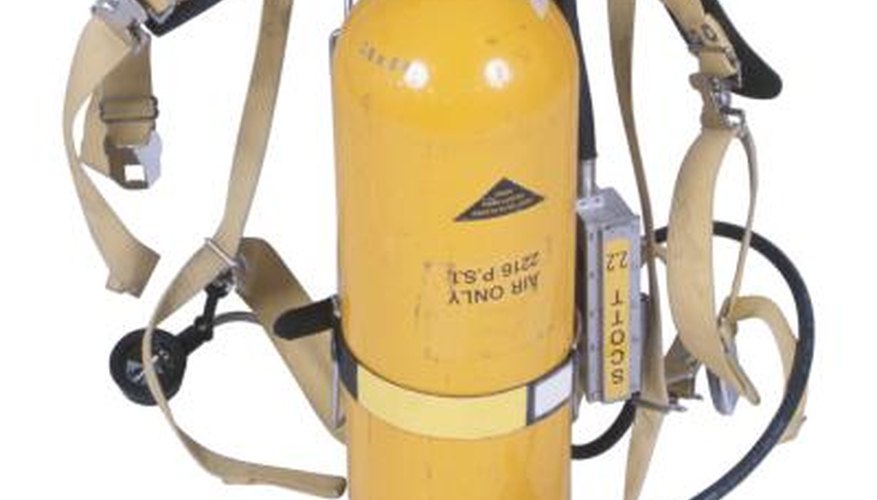Oxygen tanks support individuals with respiratory disorders or individuals who need continuous oxygen as a result of a temporary illness or accident. Each tank carries a finite amount of oxygen. For this reason, individuals must perform tank duration calculations to estimate the amount of time they can rely on one tank. Many factors apply when calculating duration, including variables such as safe residual levels and the conversion factors required to convert tank cylinder pressure into litres of oxygen.
- Oxygen tanks support individuals with respiratory disorders or individuals who need continuous oxygen as a result of a temporary illness or accident.
- Many factors apply when calculating duration, including variables such as safe residual levels and the conversion factors required to convert tank cylinder pressure into litres of oxygen.
Determine the current cylinder pressure of the oxygen tank. Refer to the pressure gauge located on the cylinder of the oxygen tank. As an example, assume it's 907 Kilogram per square inch or "psi."
Find the safe residual level associated with the oxygen tank. This is a safety factor built in to ensure patients do not run completely out of oxygen. Refer to the owner's manual or contact your physician or therapist. Because of the importance, the American Academy of Orthopedic Surgeons established a minimum safe residual level of 200 psi.
- Find the safe residual level associated with the oxygen tank.
Calculate the available cylinder pressure by subtracting the safe residual level from the current cylinder pressure. Using the example numbers:
Available cylinder pressure = 2000 psi - 200 psi = 1,800 psi
Find the conversion factor to convert available cylinder pressure into available litres of oxygen. Oxygen tanks' conversion factors vary with size according to the following schedule:
- Find the conversion factor to convert available cylinder pressure into available litres of oxygen.
D size = 0.16
E size = 0.28
G size = 2.41
H and K size = 3.14
M size = 1.56
As an example, assume a D size, which has a conversion factor of 0.16
Calculate the available litres of oxygen by multiplying the available cylinder pressure by the conversion factor. Continuing with the example:
Available litres = 1,800 x 0.16 = 288 litres
Determine the flow rate. The flow rate is prescribed by the physician and is expressed in litres per minute. As an example, assume 0.5 litres/minute
Calculate the duration of flow using the formula: Duration is the available litres divided by the flow rate. Continuing with the example numbers:
Duration = 288/0.5 = 576 minutes.
